Factors Affecting Shelf Life of Meat Products and Main Countermeasures
Release Time:2019-05-22 14:18:53
Hits:
Meat products are rich in nutrition, and have become an important part of people's food on the dining table due to their unique flavor and simple, fast and quick edibility. However, because meat products are rich in fat and protein and have high water activity, they are easily contaminated by microorganisms and affected by environmental factors during processing, storage and sale, resulting in spoilage of products and loss of their edible value. Therefore, people have paid more and more attention to finding an ideal way to preserve meat products and prolong their shelf life.
1 to ensure the freshness and hygiene of raw and auxiliary materials
1. 1 quality of raw materials
The hygienic condition of raw meat is the first pass and the most important factor affecting the shelf life of products. The initial bacteria count of the raw material is the initial pollution of the raw material meat. The lower it is, the longer the shelf life of the produced product is relatively. The higher the initial bacteria count of the raw material meat, the shorter the shelf life of the produced product is relatively. Therefore, meat processing enterprises had better choose the raw meat slaughtered by regular manufacturers, because the initial bacteria number in the raw materials should be controlled within the specified range and reduced to the greatest extent in strict accordance with the process and sanitary measures. Otherwise, if raw meat with unqualified hygienic index is used, the total number of bacteria in the processing process will be at a higher level.
1. 2 Quality of Auxiliary Materials
Attention should be paid to the hygiene of auxiliary materials. If the bacterial contamination of auxiliary materials is serious, it will directly lead to the corruption of products. Therefore, sanitary inspection should be strictly carried out when auxiliary materials enter the factory. At the same time, good temperature control, ventilation, dust prevention, moisture prevention and other facilities should be provided for the storage of auxiliary materials to ensure that the warehouse is clean, ventilated, cool and dry.
2 strictly control the workshop hygiene
The sanitation of the workshop includes the sanitation of personnel, environment (such as air, walls, floor, etc.) and equipment. General workshop temperature is 1622℃, very suitable for microbial growth, must have a strict and perfect health system A workers must change into clean overalls before entering the workshop, change clothes after the hair is not exposed, must use liquid disinfectant soaking hands, rinse with water, blow dry; Ensure good health and no hand injuries; All equipment and appliances directly contacting with raw materials must be scalded and washed with hot water above 85°C after processing, dirt and meat crumbs shall be removed, and disinfected with disinfectant for 10〜15min. All processing workshops and cold storage shall be cleaned and disinfected regularly (by means of caustic soda, dilute hydrochloric acid, ozone and ultraviolet, etc.) to make microorganisms lose their living environment.
3 Reasonable Process and Good Packaging
3.1 Reasonable Process
All kinds of materials added in the product and additives with anti-corrosion effect must be evenly distributed in all components of the product. If they cannot be evenly distributed, some bacteria that do not permeate will not be inhibited. Under appropriate conditions, the total number of bacteria will rise, eventually leading to the destruction of the product. Therefore, the length of product processing time, temperature and vacuum degree will affect the penetration of various materials in the product. At the same time, due to different process methods, It is also possible that the water content of each part in the product is inconsistent, and the relative water activity of the place with higher water content is higher, which leads to the proliferation of microorganisms and then gradually leads to the deterioration of the product. Formulating a reasonable formula to ensure that the water content in the product not only meets the quality requirements, but also is easy to control the water activity is also a crucial link.
3.2 Sealing Degree of Packaging and Quality of Packaging Materials
The degree of sealing in the product packaging process is the key factor in the shelf life of the product. Therefore, strict attention should be paid to the degree of sealing in the production process and reasonable technical parameters should be formulated to prevent microorganisms from entering the product packaging to breed. At present, the main packaging methods are vacuum packaging and modified atmosphere packaging with carbon dioxide concentration of 25% and 100%. Studies have shown that vacuum packaging of beef, pork and meat derived from poultry can extend the shelf life to about 10 weeks, and modified atmosphere packaging can extend the shelf life to about 19 weeks.
The air permeability and oxygen permeability of product packaging materials will also affect the shelf life of products. Packaging materials are to ensure that the sealing time meets the shelf life requirements. Once leakage occurs, microorganisms will rapidly propagate under suitable weather conditions, thus leading to the destruction of products.
Use advanced sterilization technology
4.1 Microwave Treatment
Microwave sterilization and fresh-keeping food is a new technology commonly used in the world, which is characterized by rapidness, energy saving and little influence on the quality of food.
4.2 Irradiation Treatment
Irradiation storage of meat is to use Y-rays emitted by radionuclides or electron beams or X-rays generated by electron accelerators to irradiate meat within a certain dose range to kill pests, pathogenic microorganisms and other spoilage bacteria, or to inhibit certain bioactive substances and physiological processes in meat, so as to achieve the purpose of preservation or preservation.
4.3 ultraviolet sterilization treatment
Ultraviolet rays (UV) have lethal effects on microorganisms, of which 254nm is the most lethal. After UV sterilization, there is no residue, does not affect the temperature and humidity of food, and has high economic benefits.
4.4 High Pressure Treatment
This technology will kill bacteria after ordinary foods such as meat are treated at thousands of atmospheres, and meat and other foods can still maintain their original freshness and flavor. The energy transferred to food molecules during high-pressure treatment is very small, which can maintain the original fresh taste and nutrients of food. It is a fresh-keeping method with low energy consumption and high efficiency.
5. Add appropriate amount of preservative
Adding preservatives to meat products is a common method to prolong the shelf life of meat products in China. The main preservatives can be divided into chemical preservatives and natural preservatives.
Chemical preservatives used in meat products mainly include acetic acid, citric acid, lactic acid and its sodium salt, sodium diacetate, sorbic acid and its potassium salt, etc. Trial verification shows that these acids alone or in combination have certain effects on prolonging the storage life of meat. Sorbic acid and potassium sorbate are healthy and safe additives with good antibacterial and anti-corrosion functions. Some countries use them as general preservatives.
Common natural preservatives include nisin, lysozyme and extracts of various natural plants. Nisin (Ni- sin) is the first bacteriocin applied to food. As a safe and nontoxic food preservative, Nisin has been widely used, which can effectively prevent the germination of botulinum spores. Its important value in preservation lies in its effective effect on Bacillus cereus, which are the main microorganisms of food spoilage. Lysozyme has a good antibacterial effect on gram-positive bacteria, Bacillus subtilis, Bacillus licheniformis, aerobic spore-forming bacteria, etc., and also has a certain degree of dissolving effect on gram-negative bacteria such as Escherichia coli, common streptococcus mutans and Vibrio parahaemolyticus, with the most effective concentration of 0. 05%, the best pH value of dissolving effect of 67, and the temperature of 45 50 C. Some natural plants contain bactericidal and bacteriostatic components, which can be used as natural preservatives after extraction. They are safe and sanitary. For example, clove, cassia bark extract, allicin and alliin in garlic have good bactericidal and bacteriostatic effects. In addition, subtilisin, natamycin and chitosan are natural preservatives.
6 Control in Circulation Process
For meat products that pass the inspection and leave the factory, transportation inspection shall be strengthened to ensure cold chain transportation and safety and sanitation of transportation equipment. In particular, the cold storage shall be properly closed to prevent secondary pollution of meat products during storage. Timely store, transport and sell the products according to the required storage conditions, and shorten the turnover time and links of the products as far as possible so that the products can be sold to the end consumers in a short time, thus ensuring the quality of the products.
Conclusion
Through the application of the above methods, the shelf life of meat products can be extended to a certain extent, but for each meat product enterprise, the most fundamental way to improve the quality and shelf life of products is to improve the comprehensive level of the whole meat processing enterprise, establish a perfect food refrigeration chain, and combine modern quality management and processing technology to ensure the quality and safety of products from processed raw materials to end consumers.




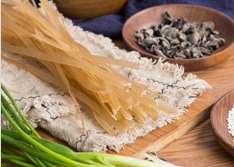
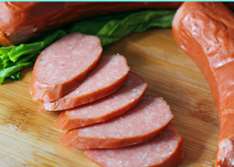
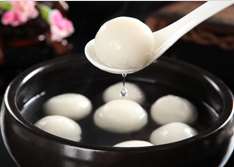

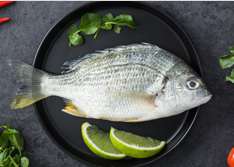
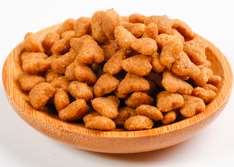
.jpg)
.jpg)
.jpg)
.jpg)
